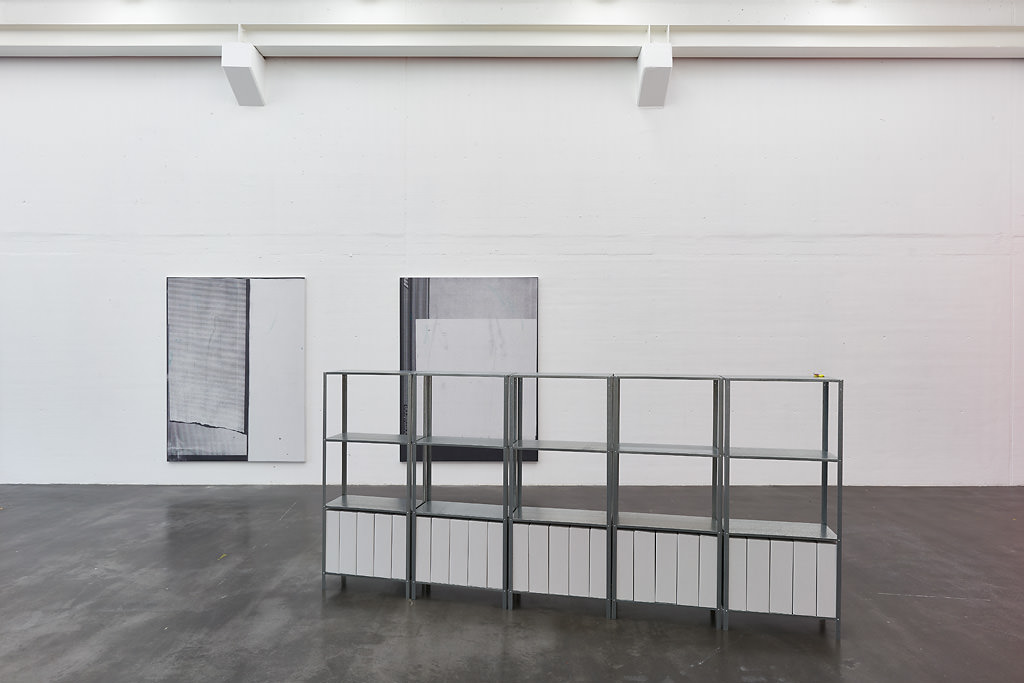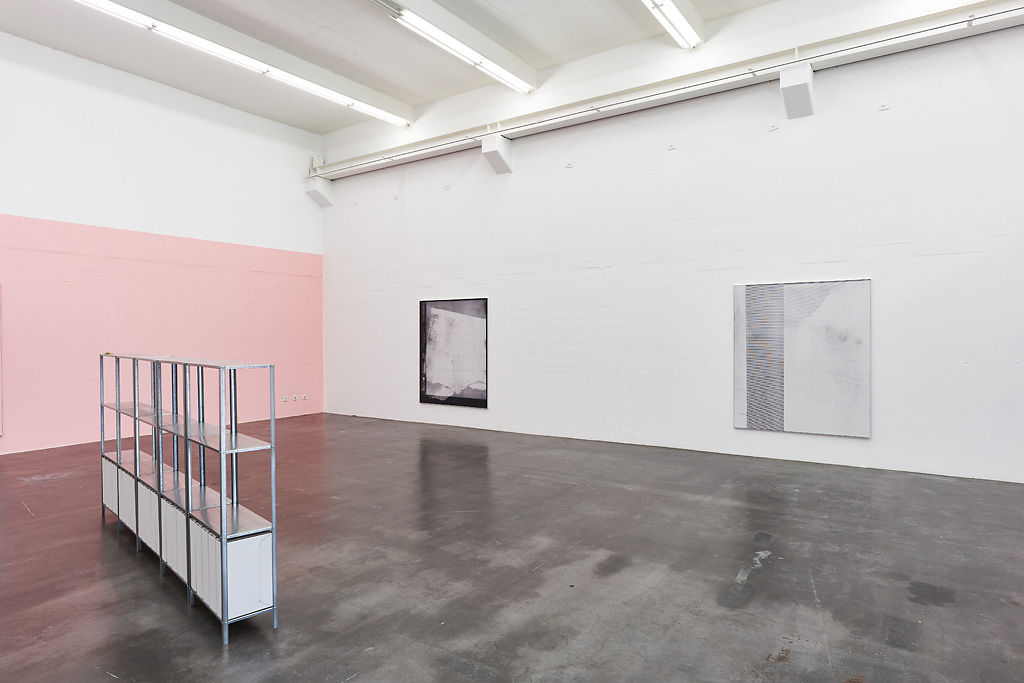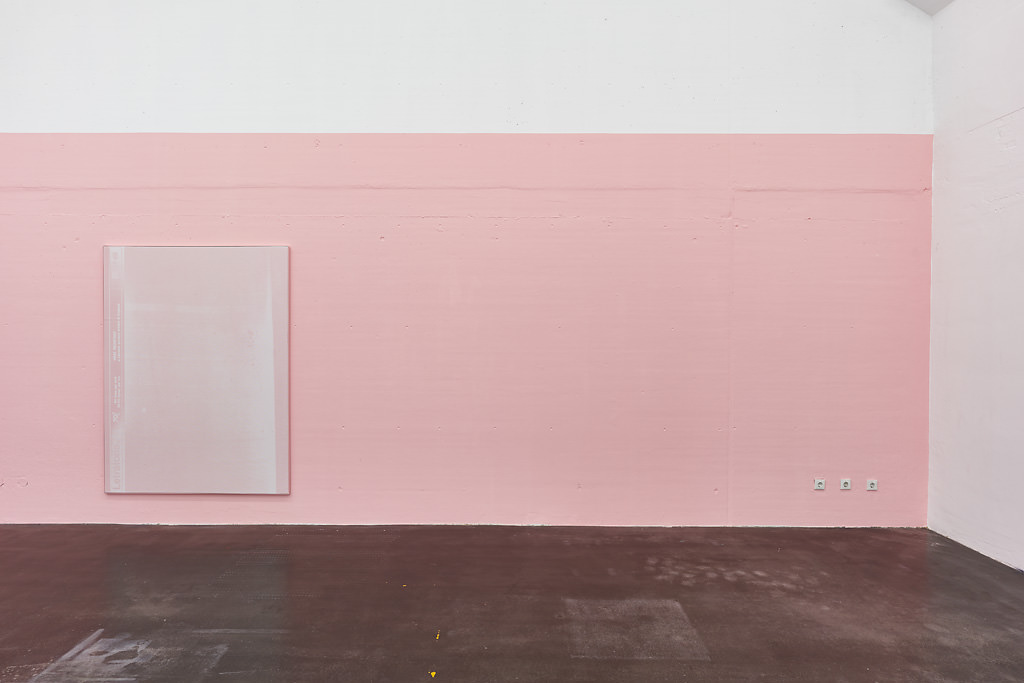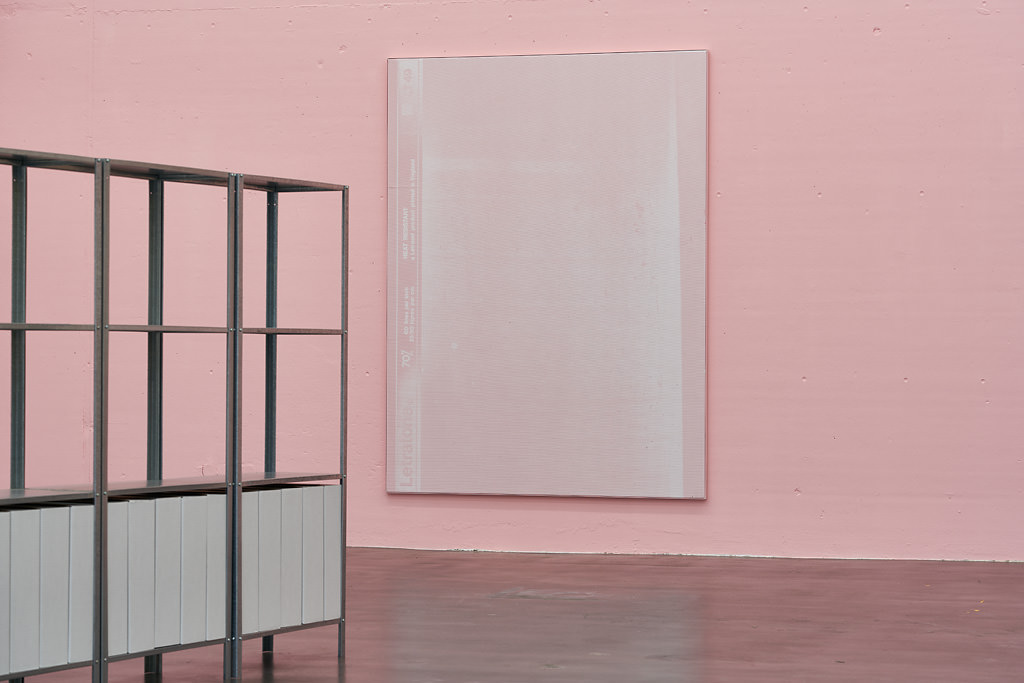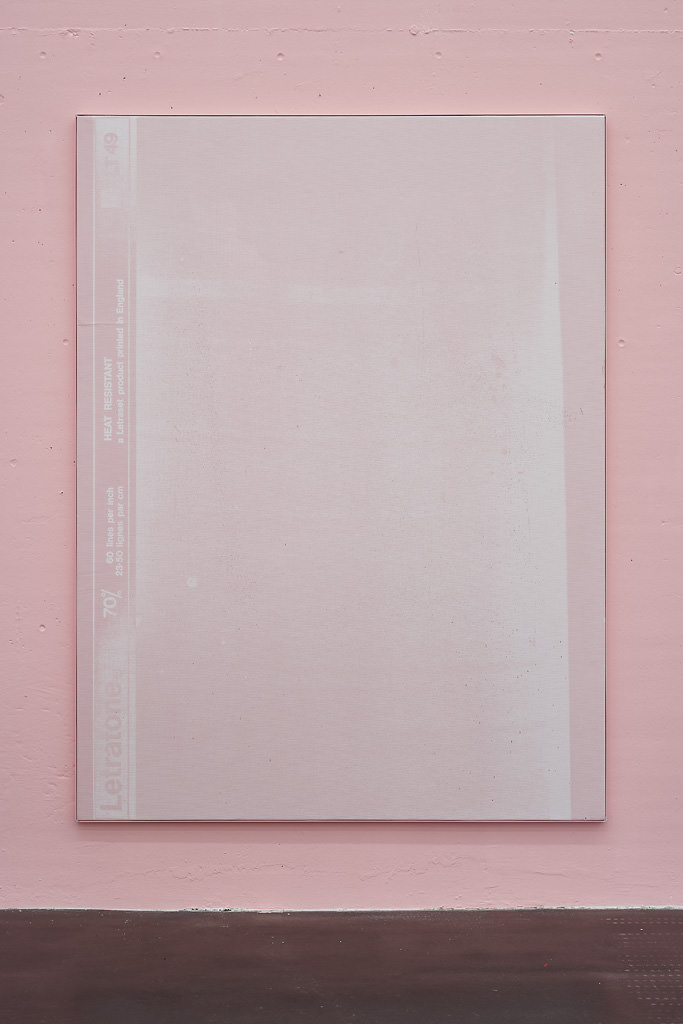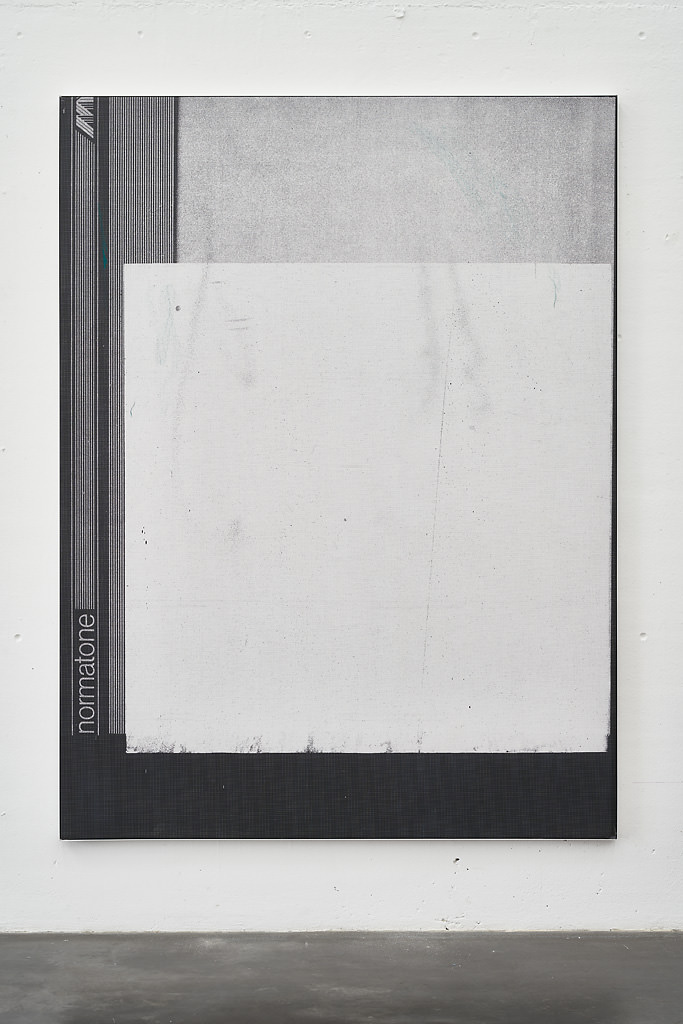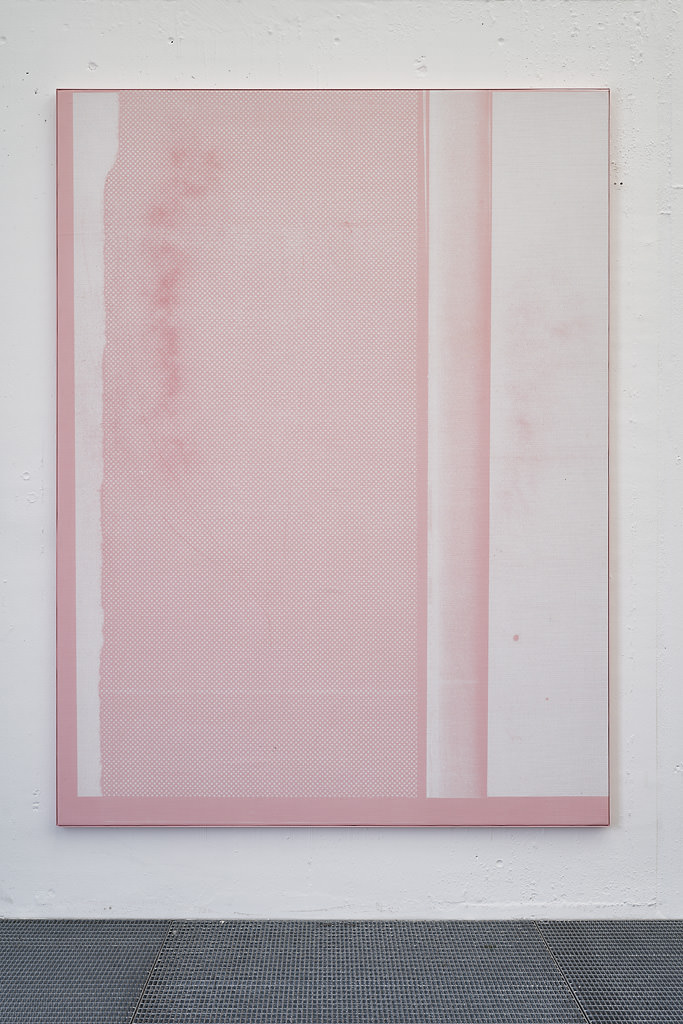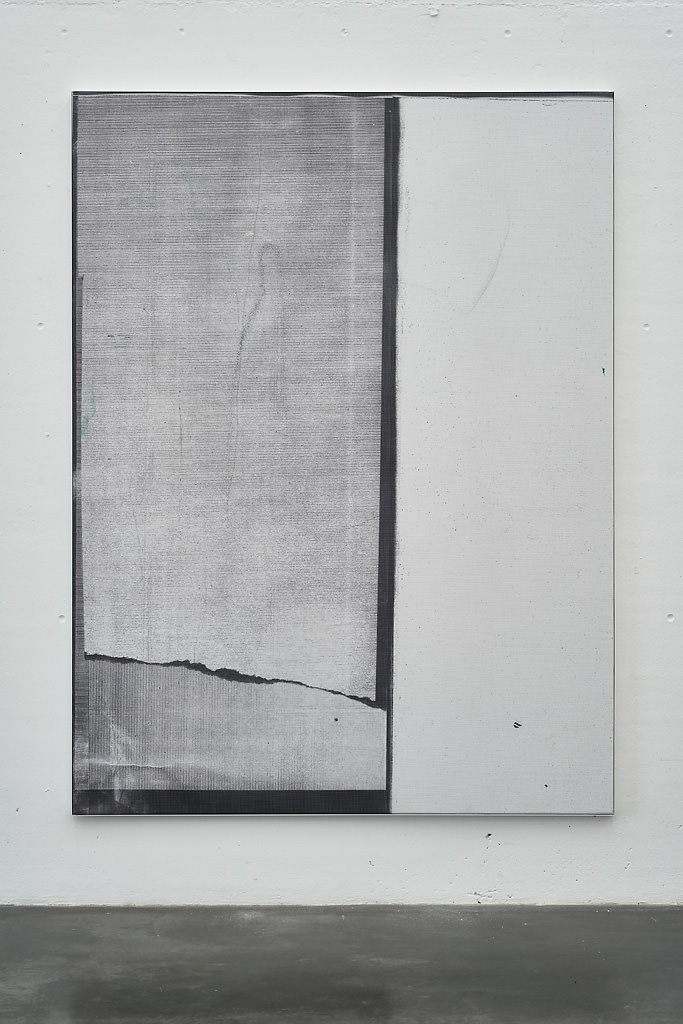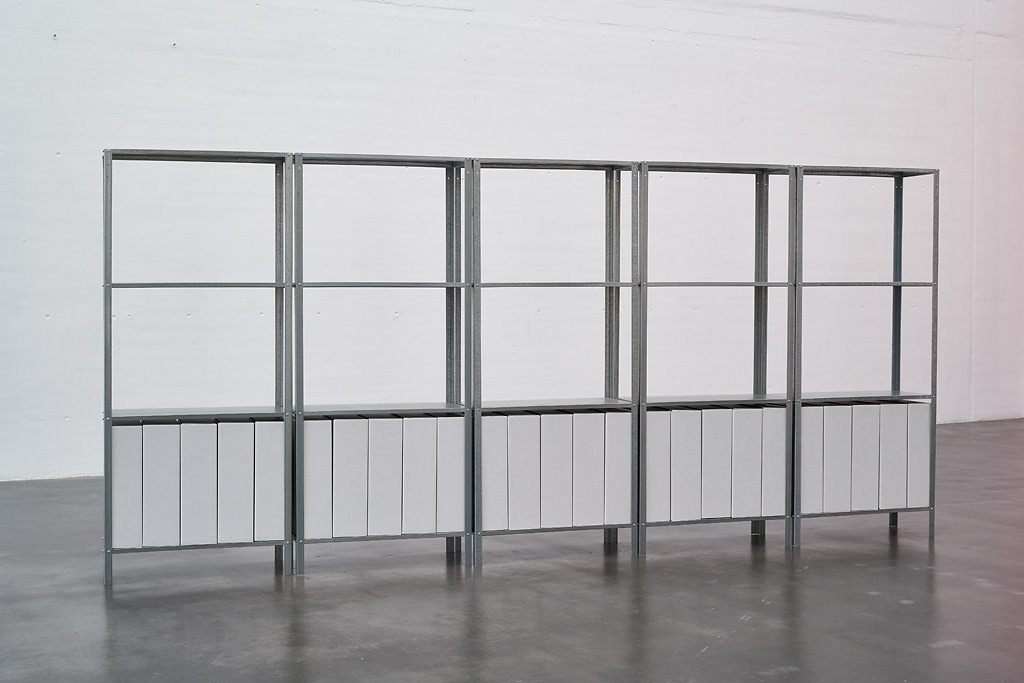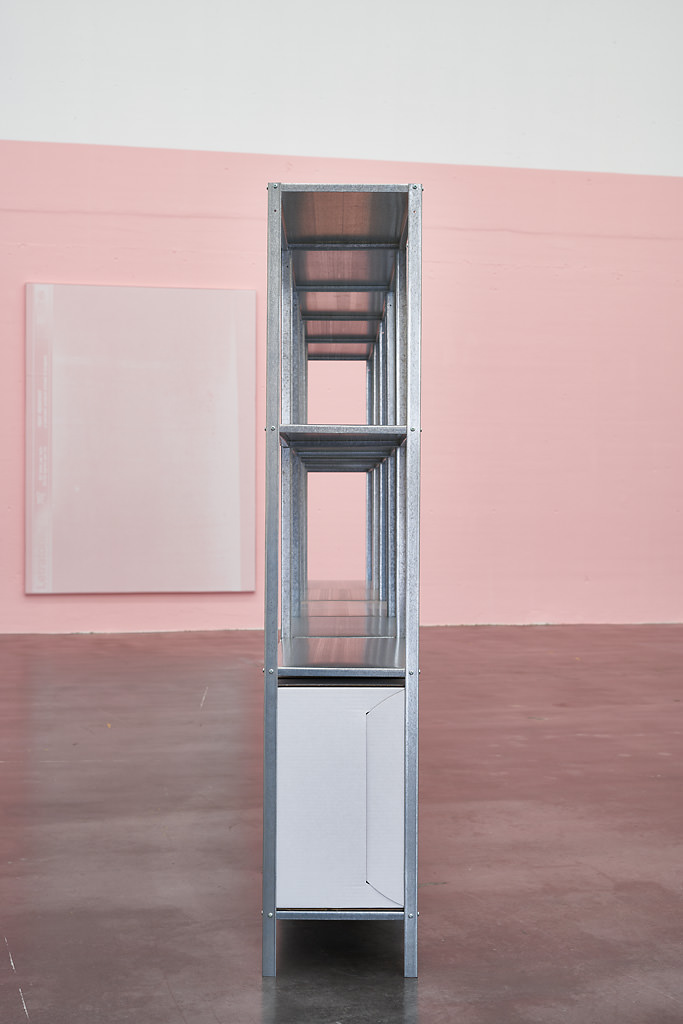MANOR GRUNEWALD
„Pinky Swear“
April 13 – May 25
Installation Views (for text English/German scroll downwards)
Ausstellungstext D E U T S C H (engl. version scroll downwards)
Die Galerie Berthold Pott freut sich, die zweite Einzelausstellung des belgischen Künstlers Manor Grunewald (Jhg. 1985)zu präsentieren.
Manor Grunewald stellt den Transformationsprozess des Bildes in den Mittelpunkt seines Schaffens, wobei der Druckprozess und das druckgrafische Ergebnis in unterschiedlichen Techniken eine besondere Rolle in seiner Bildfindung spielen. Ordnung und Chaos, Strukturen bilden, brechen, unterbrechen oder auflösen, stehen im Mittelpunkt seiner Kompositionen.
In seiner aktuellen Bilder-Serie „Letratone“, die er in der Ausstellung „Pinky Swear“ zeigt, bedient er sich im ersten Schritt der Mechanismen von Druckprozess-Techniken der 70er und 80er Jahre. So verwendet er als Ausgangspunkt seiner Bildkomposition Farbfolien aus dieser Zeit, die von Grafikdesignern für die Simulation von Farben beim Layout verwendet wurden: Auf die noch teilweise durchsichtigen Folien wurde ein farbiges Punktraster aufgedruckt, mit der sich – über ein Layout gelegt – ein farbiges Druckergebnis simulieren ließ.
Besagte Folien – auf denen die Logos des Herstellers wie „Letratone“ oder „Normatone“ zu sehen sind – legt Grunewald auf ausgewählte Papier-Fragmente (oft schwarz-weiß Kopien von z.B. gesammelten Papierbögen, Zeitschriften- oder Buchseiten, Billboard-Netzstrukturen oder Ähnliches) und wählt Ausschnitte oder Überlappungen aus. Anschließend kopiert er diese entstandenen Collagen, die meistens Fragmente geometrischer Grundformen wie Rechtecke oder Quadrate beinhalten, auf einfachen Schwarz-Weiß- oder Farbdruckern. Bei diesem Kopieren provoziert er Lichteinfälle und lässt Zufälliges und Fehlerhaftes zu. Danach scannt er das komponierte Bild und druckt es dann im UV-Print auf synthetische Leinwand.
Abschließend arbeitet er in Form minimaler Gesten mit Sprayfarbe, Acryl oder Öl auf dieser bedruckten Leinwand. Am Ende steht ein Werk, bei dem Zufälliges, Fehlerhaftes, Druckgrafisches, digital und analog Entstandenes und die manuelle Geste des Künstlers kaum noch zu unterscheiden sind, sich aber zu einem neuen Bild ganz eigner Sprache zusammengefügt haben.
Grunewalds Bilder stehen im Spannungsfeld von Chaos und Ordnung. In der Mikro-Betrachtung offenbaren sich viele Details aus dem Entstehungsprozess, Mikroraster, Gitterstrukturen oder Ähnliches. In der Markro-Betrachtung werden diese Details aber von großflächigen geometrischen Grundstrukturen gehalten und eingefasst.
Auch in seinen Plastiken verwirklicht er diese Ansätze: Er baut und erschafft Strukturen und löst sie teilweise wieder auf. In der aktuellen Ausstellung bestehen diese Plastiken aus industriellen Regalen, die durch Stahlstreben und Stahlböden eine geometrische Reihung darstellen. Simple Formen werden à la Donald Judd wiederholt und in den Raum gestellt. In den Regalen befinden sich ebenfalls industrielle Papp-Ordner, die – nebeneinander aufgereiht – wiederum Serielles bilden und aus der Fernbetrachtung wie ein Raster innerhalb eines Rahmens wirken. In einigen Regalböden fehlt jedoch die Bestückung mit Ordnern, hier werden Strukturen aufgelöst oder Wiederholungen unterbrochen.
Manor Grunewald, geboren 1985, lebt und arbeitet in Gent. 2011 gewann er den „BNP Paribas Yound Talent Award“ in Belgien, 2013 „Scholarship“ der Gemeinde Flandern, 2014 das „ISCP“ Stipendium mit 6 monatigem Atelieraufenthalt in New York.
Wichtige Solo- und Duo-Ausstellungen in 2015: Johannes Vogt Gallery, New York, Geukens & De Vil, Knokke, Frans Masereel Center, Belgien, DUVE, Berlin oder RH Gallery, New York. In 2016 ist bzw. wird er in folgenden Ausstellungen zu sehen sein: Martin Asbaek, Copenhagen (group), David Achenbach Projects, Düsseldorf (group), Berthold Pott, Cologne (solo), Art Cologne / NADA (duo), Aujourd´hui, Lisabon, Portugal (group), Noire Gallery, Turin (group), Fifi Projects, Mexico City (group), CAR drde gallery, Bologna, Italien (group), Brand New Gallery, Mailand, Italien (trio).
Exhibition Text E N G L I S H
Solo Exhibition MANOR GRUNEWALD “Pinky Swear”
March 13 – May 25, 2016
Galerie Berthold Pott is pleased to present the second solo exhibition of the Belgian artist Manor Grunewald (*1985).
Manor Grunewald focuses on the process of transforming images, whereby the printing process itself, as well as the results achieved with various printing techniques, plays a special role within his compositions, in which order and chaos, the creating, breaking, interrupting and dissolving of structures, are all key elements.
With his most recent series titled “Letratone”, examples of which are presented in the current exhibition, he delves as a first step into the mechanisms and printing process techniques of the 1970s and 80s. As the starting point of his pictorial compositions, he uses coloured films, which were used by graphic designers at the time for the simulation of colours in layouts. Onto the still partially transparent films, a coloured dot matrix was printed, with which – when laid over the layout – simulated a coloured printing result.
Grunewald lays these films – on which the logos of the producers, including “Letraone” and “Normatone”, are visible – over selected paper fragments (often black-and-white copies of, for example, sheets of paper, pages from magazines and books, billboard grid structures and the like) and chooses particular details or overlaps. He then copies the resulting collages, which generally include fragments of basic geometric forms such as rectangles and squares, using black-and-white or colour printers. With these copies, he provokes incidences of light and invites coincidence and inaccuracies. He then scans the composed image and transfers it to a synthetic canvas as a UV print.
In a final step, he then makes minimal gestures with spray-paint, acrylic and oil on these printed canvases. The result is a work, in which the coincidental, the erroneous, the printed, the digital and the analogue, as well as the manual gesture of the artist, can hardly be differentiated, but which coalesce to create an entirely new image with its own unique language.
Grunewald’s pictures are created within a field of tension somewhere between chaos and order. Viewed on a micro-level, numerous details from the creative process are revealed, including micro-rasters, grid structures, etc., whereby these details are held in place and surrounded by large basic geometric structures.
This approach is also applied to his sculptures: He builds and creates structures and then partially deconstructs them again. In the current exhibition, the sculptures are comprised of industrial shelving, the steel braces and individual shelves of which are laid out in geometric sequences. Simple forms are repeated à la Donald Judd and placed into the gallery space. On the shelves, one also finds industrial cardboard files, which – positioned side by side – also create a serial system and, seen from a distance, appear as a raster grid within a frame. On some shelves, the files are missing, so that structures are once again dissolved and repetitions interrupted.
Manor Grunewald was born in 1985 and currently lives and works in Ghent. In 2011, he was honoured with the “BNP Paribas Young Talent Award” in Belgium. In 2013, he received a scholarship from the Flemish Community and, in 2014 an “ISCP” grant for a six-month studio residency in New York.
Important one and two man exhibitions in 2015 include those at Johannes Vogt Gallery, New York; Geukens & De Vil, Knokke; Frans Masereel Centrum, Kasterlee; DUVE, Berlin; and RH Gallery, New York. In 2016, his work has been or will be seen in the following exhibitions: Martin Asbaek, Copenhagen (group); David Achenbach Projects, Düsseldorf (group); Berthold Pott, Cologne (solo); Art Cologne / NADA (duo); Aujourd´hui, Lisbon (group); Noire Gallery, Turin (group); Fifi Projects, Mexico City (group); CAR drde gallery, Bologna(group); and Brand New Gallery, Milano(trio).

